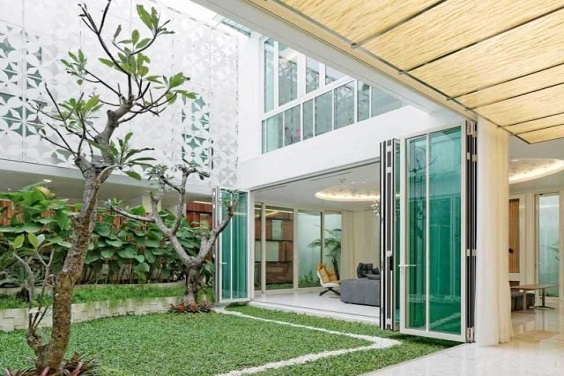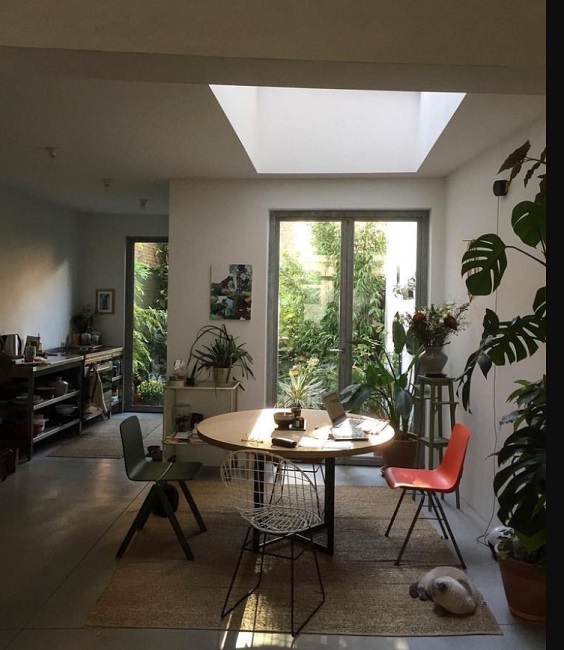DETAIL
Bring Freshness into Your House
 The hot and humid climate in tropical areas such in Indonesia might raise serious problems if you choose the wrong house design.
The hot and humid climate in tropical areas such in Indonesia might raise serious problems if you choose the wrong house design. A healthy and comfortable home does not have to be luxurious and large. A healthy home means having optimal natural ventilation where the air can flow freely with the right humidity and have optimal natural lighting with enough sunlight to keep the room bright and light.
Here are some natural ways to bring freshness in your home:
Natural Ventilation
The process of exchanging air in the building through open building elements such as vents (vents), doors and windows. According to the government's recommendation for simple housing, the minimum spaces should be ventilated by 5% of the total space area.
It’s important to have air exchange for our health. The flow of the air (wind) can accelerate the evaporation process on the skin’s surface which will provide coolness and comfort. A lot of moisture is formed from various activities such as bathing, cooking and washing. This water vapor tends to settle in the room and makes the room feel humid, especially if the air circulation is not good.
Natural Lighting
The lighting that comes from sunlight. When you have optimal sunlight, it can save electricity which is a source of artificial lighting at home. To get natural lighting in a room, you need a large window or glass wall at least 1/6 of the floor area.
How to get maximum natural ventilation and lighting for your house?
1) Arrange the house layout with the right building orientation
To get optimal sunshine, it is recommended that the window openings are facing south or north, avoiding direct sun heat as the sun's movement is from east to west.
2) Use skylights for maximum sunlight
Skylights are glass or windows that are on the roof or on the upper wall allowing sunlight to come in. The sunlight from above can make the room feel bigger, lighter, fresher and more pleasant. It is also good for those who like indoor plants. Still, you have to calculate carefully as it can also increase the warm temperature inside the building.
3) Choose the right roofing material
The sun heat is most widely accepted by the roof, so it is important to use a roofing material that does not conduct heat and install heat insulation underneath in the form of a layer of aluminum and glass wool to keep cool inside the house.
4) Ceiling with ideal height
The position of windows, doors and vents will be more effective with the right ceiling height as an air circulation path, usually 3 meters high to prevent the heat from the roof entering the room directly.
5) Using a cross ventilation system
Make two openings in the form of a window or door that are located opposite each other in one room. These vents work by taking advantage of the difference between the high and low pressure zones created by air. The difference in pressure on both sides of the building will draw fresh air into the building from one side and push the stuffy air out of the room from the other side.
The air in the house will feel cool without having to constantly use the air conditioner and by itself, the use of energy is also more efficient. However, to make a proper cross ventilation system, you must study and analyze the calculation of the wind path through your building.
6) Planting Trees
Plant a shade tree in the yard. Trees effectively reduce the heat of the sun and produce oxygen. Shade trees can also be used as protection from air and noise pollution.
Hope this will inspire you, whether you are building a new home or renovating your existing home.
Bring the natural air and light into your home. Freshness follows!

Source: https://www.livingloving.net/2018/home/renovation-101-pencahayaan-penghawaan-alami-dalam-rumah
Cover Picture source: https://kumparan.com/arsitag
Picture source: https://id.pinterest.com/pin/18999629665556903/











